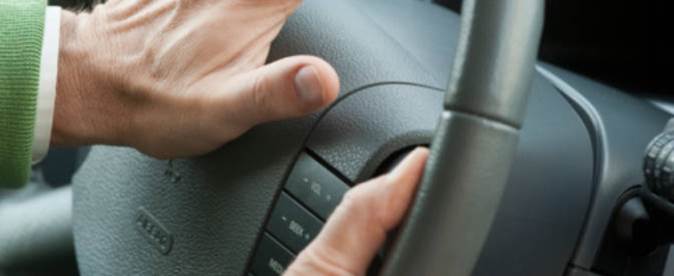The automobile allows us to communicate with other drivers in many ways. As an example, the turn signals notify motorists we plan on making a turn just as the brake lights tell them we are stopping. Sometimes it’s important to gain another drivers attention and sounding the car horn can force even the most distracted drivers to acknowledge our existence.
The Department of Transportation mandates that each vehicle be equipped with an audible warning device and that it operates as per design intent. Correct operation is often verified during a state inspection. A horn that is muffled or inoperative will need to be repaired before a passing grade is achieved. This article will cover the diagnosis and repair of common car horn problems and covers system operation.
Horn Operation
Automotive horn systems haven’t changed much over the past few decades which can make their diagnosis less complex than other systems on the automobile. The circuit itself is often protected by a separate fuse labeled in the main panel. The other components involved will be a switch, relay and the speaker device that outputs the sound. Many automobiles will have two separate horns with different pitches that when sounded together provides a full range of attention grabbing sound. When one of these becomes inoperative it can make the output seem weak, flat or underpowered.
When the horn switch is activated it allows current to flow to the relay. When the relay is energized, it closes the circuit and allows full power to be directed to the horns. Many times the sound output devices are case grounded and attached to metal parts. In this case, you see one single wire providing power to the device. Where grounded metal parts are not available, you will find multiple wire connections for both power and ground.
Common Car Horn Problems
When one or more horns refuse to operate the problem can often be attributed to the sound output device itself. Since these components are mounted on the front of the automobile to provide the most noticeable noise production they also find themselves exposed to the harsh elements. In addition, most horns have a cone shaped housing that helps amplify the sound. This same shape can funnel water and road salt into the device. It’s also possible for the electrical connection to become damaged or corroded due to its location.
Testing for these conditions is extremely straightforward and can be done with a basic test light. After locating the horn the connection should be thoroughly inspected for damage and corrosion. If no problems are found use the test light to check for 12 V When the horn is activated from the steering wheel mounted switch. If good power and ground are verified at the horn this part will need to be replaced. If you have no power at the part, listen closely to see if you can hear the relay clicking. The next step is to locate the relay and check for power coming from the switch to the horn relay.
Diagnosing the Horn Relay
Most automobiles now put the main relays in a separate panel under the hood, called a convenience center. Many of these electrical relays are the same part number even though they service different systems. When the horn relay is located verify the part number clearly written on the top. This can be swapped out with a like part number and the horn retested. If it sounds a replacement relay can be obtained from a dealerships parts department or local supplier.
Tricks for Testing Car Horns
The automotive horn circuit is a hot at all times system. This means it will work regardless of the key position. Mechanics use a trick or shortcut when diagnosing this circuit. With the vehicle in a quiet location and all of the windows up, the mechanic will get in the car and close the doors. Next they’ll operate the horn switch and see if they can hear the relay clicking. If the relay is heard with each push of the button this verifies power to the circuit, correct functioning of the switch and that power and ground exist at the relay itself. With this information the mechanics will then head straight for the horn and start diagnosis there and head back towards the relay until the problem is found.
Sometimes car horns can be repaired instead of replaced. This is especially true if the unit sounds, but not at full volume or fluctuates in tone. This can be an indication of water intrusion inside the sound device. In this situation, it is possible the part can both be disassembled and dried out or pressurized air can be blown into the cone to achieve the same results. Although this is not always effective it is worth a try and could save a trip to the parts store.

Diagnosing and Repairing Car Horn Problems
by
Tags:

Leave a Reply